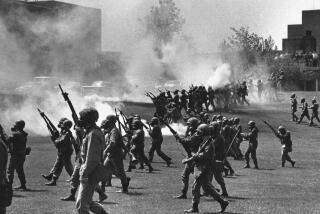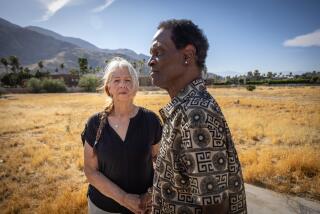From San Ysidro to Sandy Hook: Surviving, but never getting over it
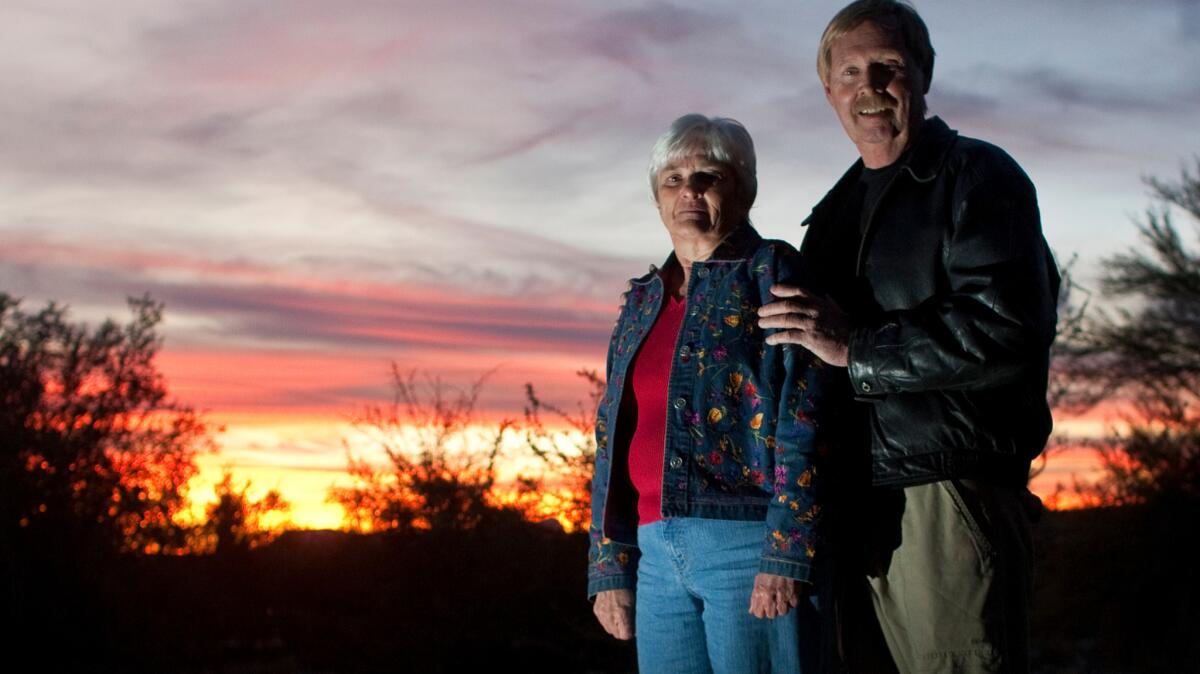
A trigger is pulled, and a country is devastated. Again and again.
Mass shootings like Sunday’s in Orlando are occurring with greater frequency and lethality, each changing the character of American life little by little.
Civil liberties are questioned, gun lobbies attacked and politicians assailed as the debate remains locked in a paralyzing draw.
By the numbers alone, more and more citizens are affected as either victims or survivors. The number of mass shooting incidents across the U.S. has more than doubled since the early 2000s, to more than 16 incidents every year, according to the FBI.
What does it mean to survive, to live with such loss, to become collateral damage in someone else’s war?
It means a relentless reassessment of the odds, a lifetime spent calculating the difference one step to the left or the right, one minute earlier or later, might have made. It means living with memories that feel like nightmares and nightmares that take the place of dreams.
It means forever staring into the face of someone you never met, someone who wanted to kill you and never explained why. Was it something you did? Is it who you are?
Outrage blurs with grief, and grief blurs with frustration as the country seems to divide between those who want to curtail the instruments of violence and those who consider them instruments of freedom.
The faith that any single day will turn out as expected is forever upended. Every shooting is unique, but each survivor tells a story with a common thread. It is that, in the aftermath, nothing can ever be the same.
If we don’t do anything, these things are going to keep happening. When is enough?
— Marcus Weaver
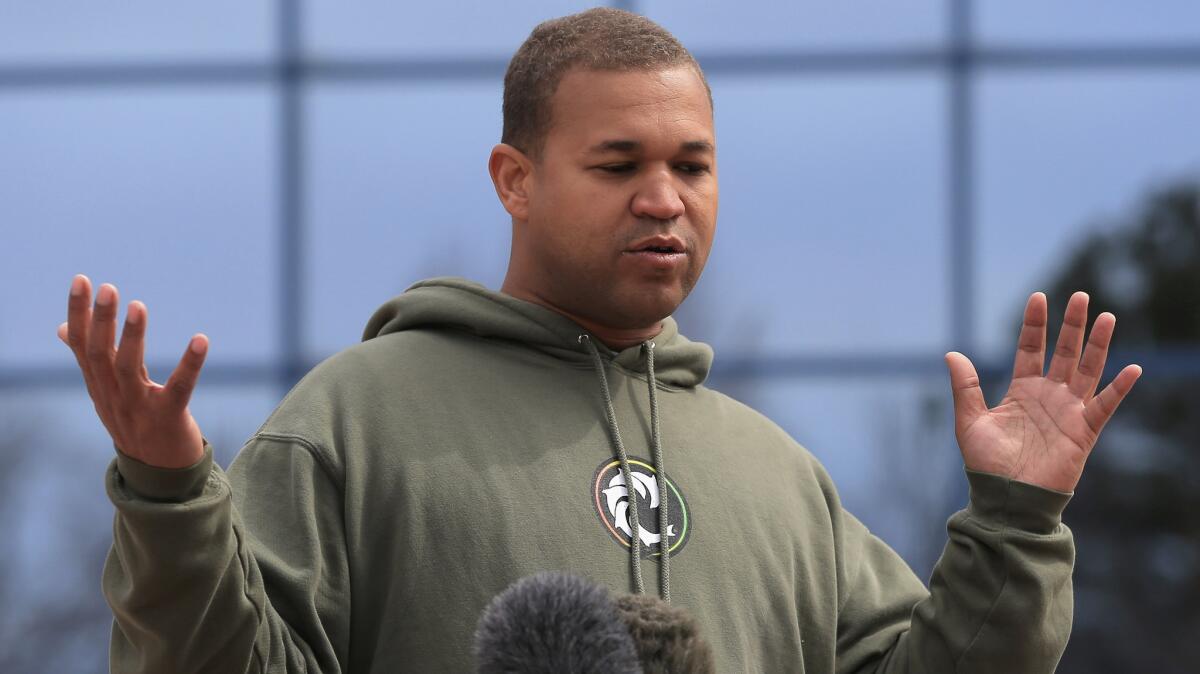
July 20, 2012: Aurora, Colo.
Trapped in the theater again, this time with his daughter and wife. The dark figure emerging from the rear exit at the right of the screen.
Shots explode like thunder, unbearably loud. The white muzzle flash glints on the shooter’s helmet. Roller coaster screams swell in the smoky air. Bits of lead hiss all around him.
Marcus Weaver jolts awake.
He shuffles quietly out of the bedroom, not waking his wife, and turns on the television.
On the screen, he sees that 20 people have died in a gay nightclub in Orlando. His mind immediately races back to the theater in Colorado where James Holmes shot scores of people, killing 12 of them. The reaction is like an electrical circuit by now. He knows exactly what those clubgoers are going to endure, the surreal feeling of landing in a situation your brain is not programmed to comprehend.
See the most-read stories this hour »
Weaver, 45, sees flashes of the friend he lost that day, Rebecca Wingo. They both grew up in abusive childhoods. He had only known her a month, but they immediately clicked. He kept telling her how great the new Batman movies were, and they decided to go to the midnight opening of “The Dark Knight Rises.”
At 12:30, Holmes, a 24-year-old graduate student with severe mental health problems, entered the theater in full tactical gear, wielding a shotgun, an AR-15-style assault rifle and a .40-caliber handgun.
When the gunfire erupted, Weaver pushed Wingo down behind the seats and heard the soundtrack of people being slaughtered.
Then suddenly, the shooting stopped.
Weaver grabbed Wingo to flee, but she slumped lifelessly, and he got shoved away from her by other people scrambling to escape.
The shooting started again. Weaver bolted out the door.
In shock, he looked at a little girl who was pointing to his arm. Blood poured out of a hole in his right shoulder.
He hadn’t even felt it.
In the hospital, he had to call Wingo’s parents. He told them he didn’t know whether she’d made it out. He called her ex-husband, the father of their two children. The man started crying. Weaver broke down, too.
Talking about it felt therapeutic, but the killing of 20 children at Sandy Hook Elementary School that December – first-graders – drove him into a deeper depression.
He quit working for five months, holed up in his townhouse, and sat on his couch watching television with his dog.
He was married by then, but never spoke to his wife, Megan, about what had happened, especially his guilt over Wingo.
When Holmes’ trial approached, Weaver finally decided to see a therapist, and he has since taken a job as director of a homeless center. He and Megan have a baby girl.
But the pain and fear still erupt. He doesn’t go to theaters. He goes numb when new mass shootings occur, and is furious that anyone can seem to buy assault rifles meant for the military.
“If we don’t do anything, these things are going to keep happening. When is enough? When should have been enough at Columbine. When should have been enough at Sandy Hook – especially Sandy Hook.”
The pain is more consistent, more pronounced, more heavy at all times. And with every subsequent mass shooting, it gets worse.
— Nelba Marquez-Greene
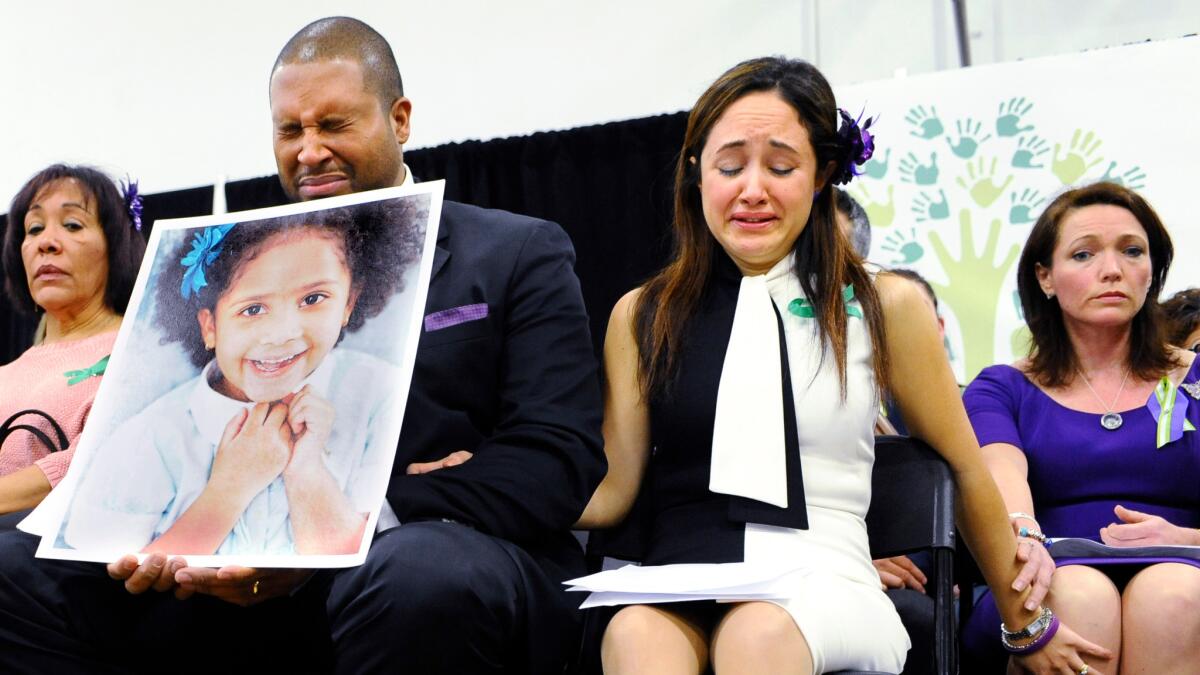
Dec. 14, 2012: Newtown, Conn.
Through long days of unbearable bereavement, Nelba Mrquez-Greene has fleeting moments of respite every morning.
In the half-minute or so between sleep and full wakefulness, it feels like her family is safe and intact, her daughter, Ana Grace, still alive, sleeping in the next room. Then the day begins and the girl slips away.
It has been 3 1/2 years since a disturbed and profoundly isolated young man shot 20 first-grade children and six adults at Sandy Hook Elementary School. But for Mrquez-Greene, the grief is as sharp as ever.
“The shock wears off, so it’s kind of like you’ve gone into surgery, you’ve had the pain meds for a while, and now they say they’re not going to give you any more so you have to deal with the pain,” she says. “The pain is more consistent, more pronounced, more heavy at all times. And with every subsequent mass shooting, it gets worse.”
Mrquez-Greene, 41, who has spent her career counseling mentally ill and troubled young people, knew her family needed to get through their ordeal by not falling into isolation. She and her husband, Jimmy, needed to keep their marriage together. They needed to be present for their 8-year-old son, Isaiah. They needed to keep friendships alive.
Yet grief swept over them setting the family table for three instead of four, watching their son play alone, during countless other small, intimate moments.
Their biggest concern has been Isaiah. He stopped smiling after the shooting. He was already a shy boy, and they worried he would retreat into isolation.
One night, a representative of the Los Angeles Kings called. They had heard Isaiah was a big hockey fan and invited the family to Los Angeles to watch a game and help raise the Stanley Cup banner.
They flew out a month after the shooting and helped carry the banner out onto the ice. Isaiah glanced up at the Jumbotron and saw himself. And like any 8-year-old boy, his first instinct was to stick his tongue out.
That night, the three huddled in bed, thinking about Ana, when the entire Kings team came to their room, with the Stanley Cup.
“As a mom, when you don’t see your kid smile for three weeks, and your kid finally gets a smile on his face – we will be forever grateful,” Mrquez-Greene says.
In Newtown, Mrquez-Greene has started directing her energy into starting a nonprofit foundation, the Ana Grace Project, to bring awareness to schools and mental health professionals about the intersection of trauma, isolation and violence.
Today, her son is a straight-A student. He just became second runner-up in the town spelling bee. He has close friends. He’s a goalie at the local hockey club.
Jimmy, a jazz musician, is back to work, and was nominated for a Grammy for his most recent album, a tribute to his daughter.
“You probably wouldn’t know unless we told you that we lost a child to gun violence. We look like every other normal American family,” Mrquez-Greene says.
“But there is no time her loss isn’t present.”
I see what they’re going through, And I think, oh, God, I know what’s ahead for them.
— Wendy Flanagan
July 18, 1984: San Ysidro
Wendy Flanagan was working the cash register at McDonald’s. The 17-year-old honors student had just made the varsity cheer squad and gotten her first summer job.
James Huberty lived a block away. He recently had lost his job and spent the morning at the San Diego Zoo with his wife and two daughters. When they returned home, he told them he was heading back out – “going hunting for humans,” he said.
At 3:56 p.m., Huberty walked into the McDonald’s. Flanagan was bringing ice from the kitchen to the counter when the first shots rang out. Her manager fell to the ground.
Flanagan ran down a flight of stairs into the basement and crammed into a janitor’s closet with five others. For the next hour and 20 minutes, they listened to the massacre above. More than 240 shots were fired. Huberty hunted people down in the parking lot and under tables. He shot babies and grandparents, husbands and wives.
Finally, a police sniper from a nearby roof got a bead on him, and put a bullet through the killer’s aorta and spine, killing him instantly.
When police led Flanagan and others out of the restaurant, they told them to hold the shoulder of the person in front of them, and not look down. Flanagan couldn’t help herself. What she saw seared its way into the limbic depths of her brain.
She tried to act like she was OK. Her parents tried to act like all was well. She was their smart, happy little girl.
She changed schools because she didn’t want anyone asking her about it, and did just enough work to graduate.
While many other victims of the San Ysidro shooting would move on in their lives, she would never recover.
“I’m a very emotional person as it is, and to put me in a situation like that so young set the course for how disastrous the rest of my life was going to be,” she said.
She is 49 now. She’s been diagnosed with bipolar disorder, which she believes was triggered by the trauma. She takes medication for anxiety. She has lived with her mother most of her life; never got a job, never got married or had children.
She took a few community college courses, but didn’t get a degree. She used drugs – still does, mostly marijuana – to “self-medicate.” She has made a suicide attempt and is sticking with a boyfriend who’s in prison for stealing cars.
She does not have flashbacks and is not even sure if the memory she has of her manager being shot is real or was conjured in therapy.
She was homeless for a while, but now is renting a bedroom in an apartment in San Diego. She gets most of her joy from her tea-cup Chihuahuas.
She can’t watch the television about Orlando. And since it happened, she’s stayed off Facebook.
“I see what they’re going through, And I think, oh, God, I know what’s ahead for them. It’s not good. I wish I could give hope for victims for this or future tragedies. I can’t. I’d like to say it gets better. But it doesn’t. It never goes away.”
I see this as an extension of the civil rights movement. What is more of a civil right than being able to breathe?
— Patricia Maisch
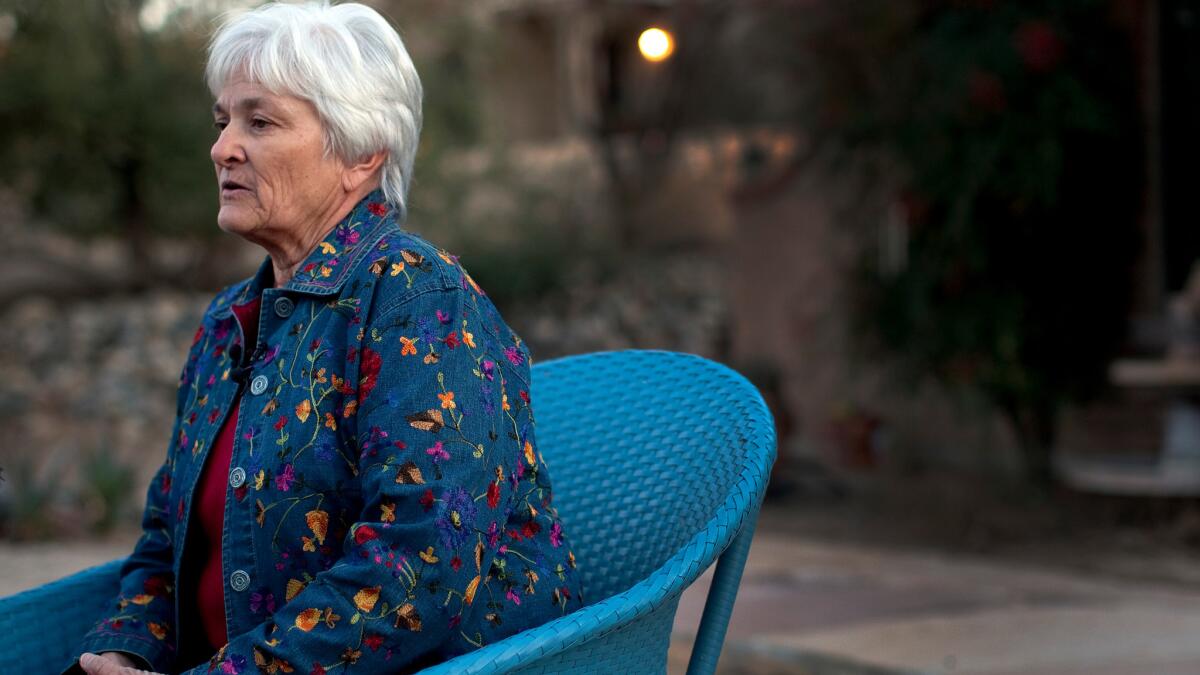
Jan. 8, 2011: Tucson
Patricia Maisch is no friend to reluctant politicians.
When the Senate defeated a 2013 bill requiring background checks on the commercial sales of guns, she stood in the gallery and shouted to the senators below: “Shame on you.”
For her outburst, security took her away for two hours of questioning. It was, she realized, the background check that many gun purchasers never experience.
But Maisch, 67, is undaunted, and this is the legacy of having survived that crisp winter day in Tucson – white clouds were sailing across a blue sky when Jared Loughner fired 33 bullets into an informal political gathering organized by U.S. Rep. Gabrielle Giffords at a shopping center.
Maisch dove for cover, and everything changed.
“When Columbine happened, I said, ‘That’s horrible.’ When Virginia Tech happened, I asked, ‘Why isn’t anyone doing anything?’ It took six dead bodies and 13 bleeding and wounded people to make me realize that that someone had to be me.”
Maisch has always considered herself the lucky one. She was not hit, and she didn’t lose a loved one. Because she’d arrived early, she had dashed into a Safeway, and when she went back outside she found herself standing in the back at Giffords’ gathering.
It was a twist of fate, she believes, that saved her life. Yet she was not saved from the memory.
“It is always behind me, beside me or in my face,” she said.
Maisch lives with her husband in a Tucson suburb. She rises early to water her plants before the rattlesnakes come out. Last week, when a news report came on the radio about the shooting in Orlando, her first words — not polite, she admits — were directed to the NRA.
She had often wondered when the death toll from the 2007 assault at Virginia Tech — 33, including the shooter — would be surpassed. She now had her answer.
She sent a text to a friend whose daughter was wounded in the Virginia Tech attack. Once again the women found themselves united in a confederacy neither had wanted.
They belong to a community of survivors. Maisch can count some 100 friends whose stories she repeats without prompting, and perhaps other mass shooting survivors whose names she knows so well.
She knows that she is different from other survivors. Some isolate themselves. Some drink. Some get angrier more than they used to.
In the wake of Orlando, Maisch is encouraged by the upswell of support for the victims. Yet she remembers that feeling after Sandy Hook, too.
“It’s going to be a marathon, not a sprint,” she says. “I see this as an extension of the civil rights movement. What is more of a civil right than being able to breathe?”
I don’t know what life I would have led if this hadn’t happened to me.
— Joshua Stepakoff
Aug. 10, 1999: Granada Hills
The scars are inescapable — four of them, from two bullets — and for years, Joshua Stepakoff wanted to cover them up.
The exit wound on the back of his leg looks like a flower, he says, a concave circle with ridges that extend from the center to the perimeter.
When he was younger, he didn’t like wearing shorts. People would ask him questions that always took him to the same place: the North Valley Jewish Community Center in Granada Hills.
Stepakoff was 6 when Buford Furrow Jr. stormed the summer camp there with a 9-millimeter semiautomatic, wounding two adults and three children. No one was killed at the center. Furrow’s murder victim came later in the day: Joseph Ileto, a mail carrier on his rounds.
Stepakoff’s memories of the day are gauzy: a game of capture the flag, then running in terror.
Nearly 17 years have done little to ease the pain, and when he first heard the news from Orlando, he felt his heart race. This was not what he expected on the first day of a family vacation in Costa Rica.
On Facebook and CNN, he watched the lines of people donating blood. He listened to interviews with survivors. He wanted to know more, but he also wanted to tell them to stop.
“You can’t let the craziness that surrounds all of this get in the way of grieving or being human,” he said.
Stepakoff, 23, will start a graduate program in clinical psychology at Pepperdine University in the fall. He hopes to work with children who have had a traumatic event or injury in their lives.
When people ask him how the shooting affected him, he shakes his head.
“I don’t know what life I would have led if this hadn’t happened to me,” he says.
The part of his life he left behind that day he carries on a keychain. It’s a small Snoopy doll, a touchstone to his childhood love for the cartoon “Peanuts.” It is, he says, a memento of the time before he “stared down the barrel of a gun, face to face with a neo-Nazi.”
At first he thought he would be OK. He just wanted to be normal.
He saw a therapist for panic attacks, but more than anything, he wanted to be “a cool teenager,” he said, and for a time it seemed possible. He wore long pants, and no one asked him questions.
But nearly 10 years after the shooting, he realized that he would never be normal. Taking out the trash one evening, he was overcome with the feeling that he was going to be attacked. He knew then that he needed to start talking about what had happened that day so long ago.
“The only control I can have,” he says, “is the understanding that I have no control.”
ALSO
Full coverage: Orlando nightclub shooting
For the builder of Orlando’s 49 memorial crosses, his craft from the heart is a familiar one
Nearly a week later, a shooting survivor’s mind races with memories of her ‘hero’ cousin
More to Read
Sign up for Essential California
The most important California stories and recommendations in your inbox every morning.
You may occasionally receive promotional content from the Los Angeles Times.
